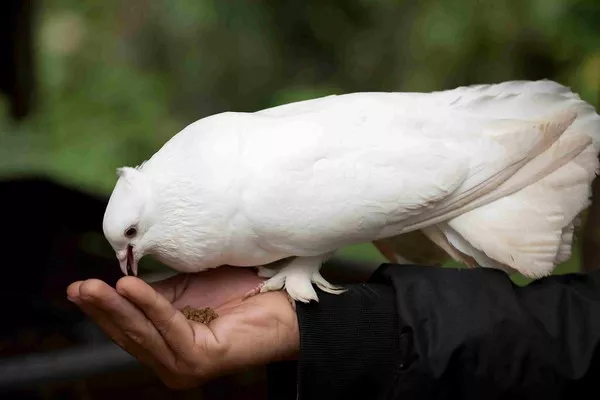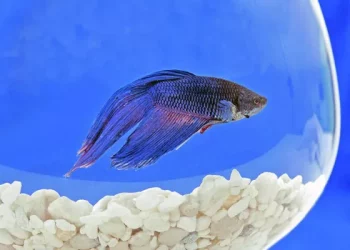The Fernandina tortoise is a rare and elusive species of tortoise that has captured the fascination of researchers and conservationists around the world. With a long and mysterious history, this tortoise’s diet plays an essential role in understanding its behavior, habitat needs, and conservation. In this article, we will explore the eating habits of the Fernandina tortoise, focusing on what Fernandina tortoise eat in their natural habitat, how they obtain food, and the factors that influence their dietary choices.
Introduction to the Fernandina Tortoise
The Fernandina tortoise (Chelonoidis phantasticus) is named after Fernandina Island, part of the Galápagos Archipelago in Ecuador. This species has a special place in the world of zoology due to its elusive nature and the mystery surrounding its existence. For many years, it was thought to be extinct, but in 2019, a team of scientists rediscovered the species, bringing it back from the brink of extinction. The Fernandina tortoise has a unique place in the conservation community, with efforts underway to study its natural history and habitat in an attempt to preserve the species.
The Fernandina tortoise is a member of the Chelonidae family, which includes all tortoises, turtles, and terrapins. While the tortoise itself is well-known for its slow and deliberate movements, its diet and feeding habits remain a critical aspect of its survival.
Natural Habitat and Diet
The natural habitat of the Fernandina tortoise is restricted to the island of Fernandina, one of the youngest and least developed of the Galápagos Islands. The island is characterized by its volcanic terrain, sparse vegetation, and harsh climate, which includes long periods of drought and occasional heavy rainfall. Despite these challenging conditions, the tortoise has adapted to the environment and developed a diet that enables it to survive in such a difficult ecosystem.
Vegetation and Plant Life
Fernandina tortoises are primarily herbivores, meaning they feed mostly on plants. The types of plants available on Fernandina Island vary depending on the time of year, with certain species of plants being more abundant during the wet season. These plants provide the necessary nutrients for the tortoises, including vitamins, minerals, and fiber. Some of the most common plants in the diet of Fernandina tortoises include:
Cacti: Cacti are one of the primary sources of food for Fernandina tortoises. These plants thrive in the dry conditions of the island and are rich in water and nutrients. The tortoises eat both the fleshy pads and the fruit of cacti, which are high in sugars and provide a vital source of hydration.
Grasses: Various species of grasses grow on Fernandina Island, and these plants are a staple in the diet of the Fernandina tortoise. Grasses are an excellent source of fiber, which helps with digestion and overall health. The tortoises graze on grasses during the wet season when they are more abundant.
Herbs and Shrubs: The island is home to a variety of herbaceous plants and small shrubs, many of which provide the tortoises with essential nutrients. These plants are often eaten in smaller quantities but still play an important role in the tortoise’s diet.
Leaves and Fruits: Fernandina tortoises may also feed on the leaves and fruits of native trees and plants. During times when fruits are ripe, such as the wet season, tortoises can be observed consuming the fruits of plants like the guava or the native cecropia tree.
Adaptation to Limited Resources
The limited availability of food on Fernandina Island means that the tortoises have adapted to survive with minimal resources. This is particularly important during the dry season when food is scarce. The Fernandina tortoise’s ability to store large quantities of water and food in its body allows it to survive during periods of drought. This unique adaptation is part of what allows the Fernandina tortoise to endure the challenging conditions of its environment.
During dry spells, the tortoises may also rely on the consumption of cactus pads and other succulent plants that retain water. These plants can serve as both a source of food and hydration during difficult times, enabling the tortoises to remain active and healthy.
Feeding Behavior
Fernandina tortoises, like other tortoises, are known for their slow and deliberate movements. This behavior extends to their feeding habits. The tortoises do not hunt or scavenge for food; instead, they rely on their keen sense of smell and vision to locate plants and vegetation. Once they find a suitable plant to eat, they use their strong jaws and beak-like mouth to bite and tear off pieces of the plant.
Tortoises are also known to engage in slow, steady grazing over long periods, carefully selecting the best pieces of vegetation. While they may not consume large amounts of food at once, they eat consistently throughout the day to meet their nutritional needs. This grazing behavior is typical of herbivorous tortoises, who require a constant supply of plants to sustain their energy levels.
Factors Affecting Diet and Eating Habits
Several factors influence the diet and eating habits of the Fernandina tortoise. These include:
Seasonality: The availability of food on Fernandina Island changes throughout the year, with certain plants being more abundant during the rainy season. This seasonal variation affects the types of food that are available to the tortoises and, consequently, their dietary choices.
Environmental Conditions: The volcanic terrain and arid climate of Fernandina Island mean that food and water can be scarce. The tortoises have developed the ability to endure long periods without food, relying on their large body size and slow metabolism to conserve energy.
Predation and Competition: Although Fernandina tortoises have few natural predators, other species, including invasive animals, may compete with them for food resources. This competition can impact the availability of certain types of plants and influence the tortoises’ feeding patterns.
Human Intervention: Conservation efforts to protect the Fernandina tortoise often involve monitoring food sources and providing supplementary food in captivity. These interventions may help ensure the health and well-being of the tortoises, especially those that have been relocated to captive breeding programs.
Importance of a Balanced Diet
Like all animals, the Fernandina tortoise requires a balanced diet to maintain good health. A healthy diet provides the tortoise with the necessary nutrients to support its immune system, growth, and reproduction. In the wild, the tortoise’s diet is naturally diverse, providing a mix of water-rich cacti, fibrous grasses, and nutrient-dense fruits and leaves. This variety helps meet the tortoise’s dietary needs and ensures that it remains in good physical condition.
In captivity, maintaining a balanced diet for the Fernandina tortoise can be more challenging. Zookeepers and conservationists must carefully plan and provide a variety of foods to replicate the tortoise’s natural diet. Supplementing with vitamins and minerals may also be necessary to ensure the tortoises’ overall health.
Conservation and the Future of Fernandina Tortoises
With the rediscovery of the Fernandina tortoise, there is renewed hope for the species’ survival. However, one of the biggest challenges in protecting this tortoise is ensuring that it has access to sufficient food and suitable habitats. Habitat destruction, climate change, and invasive species are some of the primary threats that endanger the tortoises’ food sources and overall survival.
Efforts are being made to protect the remaining population of Fernandina tortoises and restore their natural habitat. Conservation programs are working to prevent overgrazing by non-native animals, such as goats and rats, which can damage the native plant life and reduce food availability for the tortoises. Additionally, research into the tortoises’ diet and feeding habits continues to provide valuable insights that can help improve conservation efforts.
Conclusion
The Fernandina tortoise is a remarkable species with a fascinating history. Understanding what these tortoises eat is an important part of their conservation and protection. Their diet is largely composed of vegetation, including cacti, grasses, herbs, and fruits, all of which provide them with the necessary nutrients to survive in their harsh environment. These tortoises have adapted to a life of limited resources, making them resilient and able to withstand the challenges of their volcanic island home.
With continued conservation efforts and research into their dietary needs, there is hope that the Fernandina tortoise can thrive once again in its natural habitat. By understanding the eating habits of this extraordinary creature, we can help ensure its survival for generations to come.
Related Topics:




















